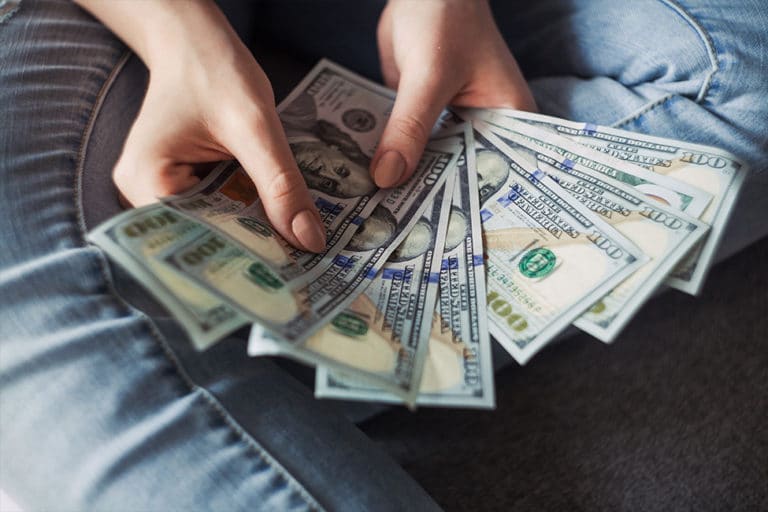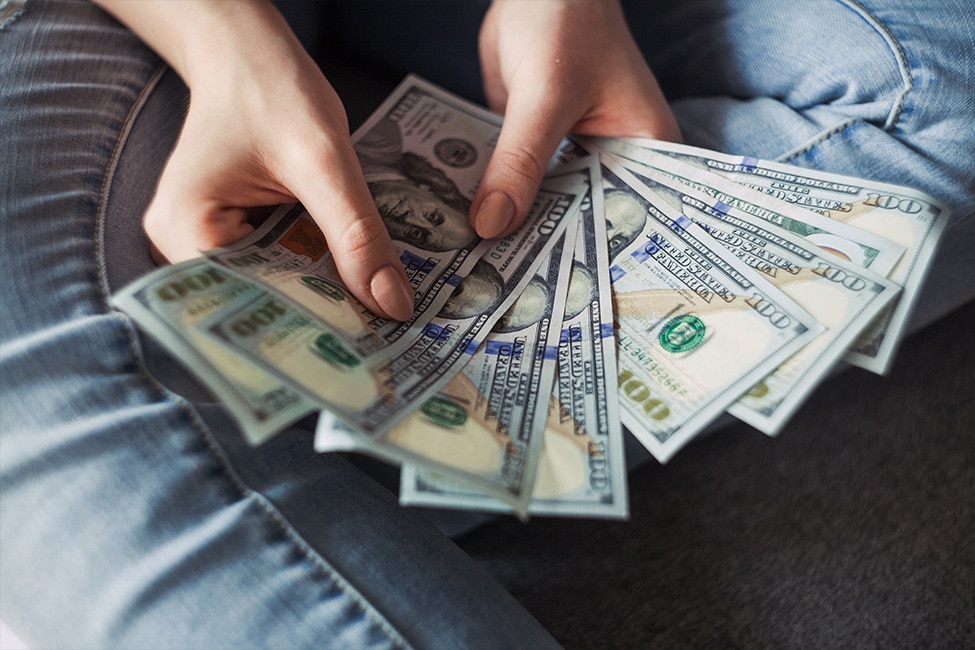

In 2010, Allstate Insurance Company launched its “Mayhem” video campaign. Dean Winters, who performed magnificently as Mayhem, gave viewers a play-by-play to the devastation he was creating. The videos were both devastating and comical, making an impact across America.
While the Mayhem videos are entertaining, they also teach us what life can feel like without having appropriate safety nets in place. To help avoid “mayhem” in your own life, let’s review what I call the 3 Money Buckets Required To Build Wealth.
While these accounts aren’t going to make you wealthy per se, they do help you keep the Wealth you’ve created for yourself in times of hardship and economic downturn.
Without further ado, here are the 3 Money Buckets required to Build Wealth.
Money Bucket #1: Your Emergency Fund.
In movies, there’s often a burning building. People, fearful for their lives, jump from the burning building to safety. Are they crazy about jumping? No, they see the inflatable jump cushion in the streets below and jump, knowing the air cushion will absorb the impact of their fall.
Unfortunately, the hero of the story doesn’t get such a cushion. By the time he or she helps everyone escape, the fire gets out of control. The hero has to jump to the adjacent building, hoping to grab hold of the emergency stairwell.
In many situations, the hero either gets lucky or tumbles painfully to the streets below into a dumpster. Either way, they get seriously banged up.
With your finances, an emergency fund works much like that inflatable jump cushion. Its job is to break a financial fall. Without it, people are like the hero, tumbling to the streets below, banged up and broken.
Without an emergency fund, people resort to debt and borrow from their retirement accounts.
Dave Ramsey, an American author and radio show host suggests building a minimum of $1,000 in your Emergency Fund. From there, you’re supposed to start tackling your debt.
As someone who has built and used his emergency fund, I can attest that this practice has helped me through several tight spots. I’ve been able to pay unexpected bills, fix my car, replace a water heater, and repair a leaky roof without having to take out debt or borrow money from friends and family.
But, before we build our emergency fund, we need to lay some ground rules for this money. Let’s define what an emergency is and what it’s not.
Here are my rules for using money in your emergency fund:
1. Your Emergency Fund is for actual emergencies only. I define a financial emergency as an event that would prohibit you from working, create unsafe living conditions, or is simply unpredictable and has a cost.
Not having enough money to go on a last-minute trip with your friends is not an emergency. Being short on cash for the holidays is not an emergency. But needing money to purchase a flight to attend a loved one’s funeral is an emergency.
2. Your emergency fund is not a backup account; it’s your lifeline. If you routinely borrow money from this account for non-emergent things, you won’t be ready for a real emergency.
For this reason, I recommend online banking for your three money buckets. Transferring money out of online banks typically takes a couple of days, which affords you some time to think things through.
However, in real emergencies, which should rarely happen, the money is there for you. And once you use it, your priority will be to bring this account back up to $1,000.
Money Bucket #2: Your Vacation Fund
Once your Emergency Fund reaches your minimum level of a thousand dollars, you can start directing money to a Vacation Fund.
I save for vacations a little differently than most people that I know. I use a cash envelope budget to pay for vacations and traveling. My wife and I are both self-employed, and our incomes can vary.
In financially challenging years, we want peace of mind knowing that we can still get away. And in financially successful years, we might wish to get away several times. In those situations, we have a cash envelope budget for each trip.
No matter what happens, I know that I have that vacation prepaid by using my cash envelope. It also provides spending money, and it’s impossible to overspend.
Whatever your method, I recommend a starting budget of saving $40 a week or $75 bi-weekly. Schedule an automatic transfer out of your checking account to the bank account that you’ve designated as your Vacation Fund. In twelve months, you’ll have just over $2,000 saved. If that’s not enough, make adjustments to meet your needs.
You can use your Vacation Fund for one big trip or several weekend getaways. I recommend getting away every 90 days, whether it’s a staycation or somewhere within driving distance.
Money Bucket #3: Your Short Term Goals Fund
After you have a thousand dollars in your emergency fund and started automated transfers to your vacation fund, it’s time to work on your short-term goals fund.
A short-term goals fund makes sure that you have money for more capital purchases that you’ll need to make in the next 5-7 years.
For example, I tend to get a new car every 5-7 years, as I’m sure most people do. But the average car payment in America for 2019 was $554 for a new vehicle and $391 for a used one.
That’s a lot of money coming out of your paycheck. But if you had a down payment saved in a Short Term Goals Fund and were able to trade in your old car, your monthly payments could be much lower. A lower monthly payment means more freedom for you. You could continue to save and pay down debt instead of having a high car payment.
Another use for this account would be to save for a down payment on a home. Since you need this money in just a few years, it’s smarter to keep the money in cash so that you don’t have to worry about stock market fluctuations.
Conclusion
I hope that you found this to be a new perspective on creating security and confidence with your money. I have found that having these 3 Money Buckets: Emergency Fund, Vacation Fund, and Short Term Goals Fund to help in surviving unforeseen financial complications, go on debt-free vacations, and to have money set aside for future opportunities.
Key takeaways
- You can’t hope to build wealth if you don’t have the appropriate safety nets in place. Without an emergency fund, you’ll resort to debt to pay for unexpected bills, be forced to liquidate the savings you’ve worked so hard to build, even rob your own retirement.
- Your vacation fund allows you to go on debt-free vacations, allowing for a truly relaxing trip. It’s hard to relax if you use credit cards to pay for these trips, because we all think about all the extra hours we have to work. I’d much rather pay cash for vacation and invest the tax refund.
- The life you want isn’t made with magic, it’s made with money. Your 5-Year Goals fund is a great spot to save money that you need in the short term. It can be used as a downpayment on your next apartment, a home, or that car you’ll need in just a few short years.
- Creating sinking funds, like these core money buckets, will allow you to create the life you truly want to live, enabling you to pay yourself first.
SOURCES:
1) Credit Trends, Experian — https://www.experian.com/content/dam/marketing/na/automotive/quarterly-webinars/credit-trends/q1-2019-safm-final-v2.pdf
